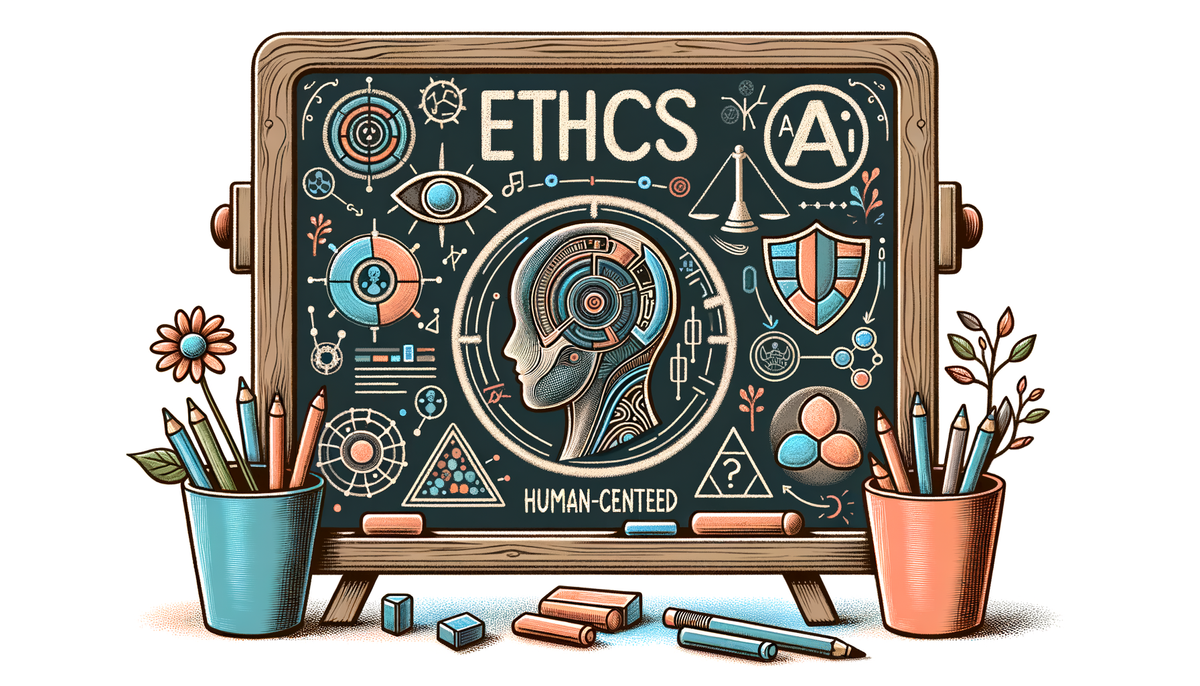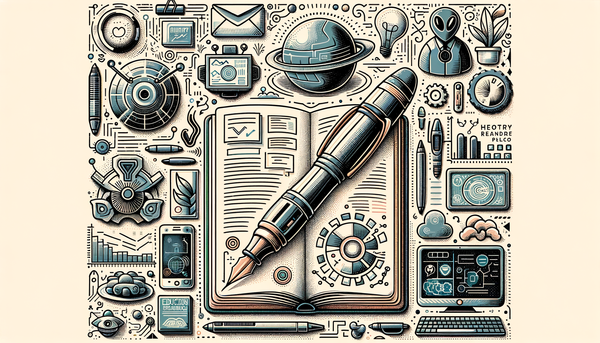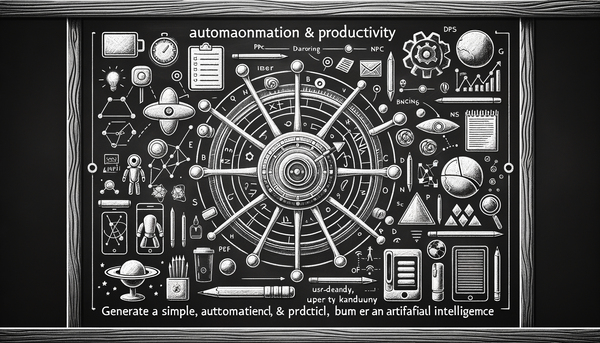AI News Update: Photography, Music, and Investments

In today’s ever-shifting digital landscape, artificial intelligence (AI) is proving to be both a powerful tool and a disruptive force across myriad sectors. From innovative cyber fraud fighters who outsmart scammers with digital bots and cunning AI personas, to entrepreneurs streamlining their workdays with AI prompt techniques, and even to debates about AI’s role in cultural domains such as photography and music, this article delves into the transformative journey of AI. We explore how AI is revolutionizing cybersecurity, redefining creative authenticity, and reshaping investment strategies amid market volatility—demonstrating that the fight against digital fraud and the evolution of creative industries both hinge on the delicate balance between human ingenuity and machine learning.
Revolutionizing Cybersecurity: The Rise of AI Fraud Fighters
In the modern digital battlefield, combating cybercrime has become increasingly sophisticated, and AI is at the forefront of this counteroffensive. A fascinating example of this transformation is highlighted in the story of AI fraud fighters—digital warriors who are utilizing inherently clever tactics to turn the tables on cybercriminals. Among the leading figures is a resonant personality known as Kitboga. This YouTube sensation, celebrated by nearly 3.7 million subscribers, employs AI-powered scam-baiting bots that replicate his distinctive voice and trapping techniques. By engaging potential scammers in witty, time-wasting dialogues, Kitboga not only disrupts fraudulent schemes but also educates his audience about scam tactics.
On the corporate side, newer AI-driven personas are making their mark. For instance, O2’s introduction of Daisy—a cheeky AI granny—adds a humorous yet effective twist to keeping scammers engaged while valuable intelligence is gathered. An Australian firm, Apate, has impressed the cybersecurity community with its deployment of over 36,000 bots programmed to mimic human interactions. These bots raise the bar for defense measures by extracting critical data during scam attempts, then sharing those insights with financial institutions to refine fraud prevention protocols.
It is an ironic twist that the very technology which once powered fraud schemes is now being repurposed to dismantle them, embodying the old adage of fighting fire with fire. As one expert insightfully remarked using a popular quote from Ex Machina, “To erase the line between man and machine is to obscure the line between men and gods.” In this context, the idea speaks to the blurred edges of digital warfare: as fraudsters leverage AI to invent novel schemes, so too do the defenders harness its power to expose and foil them.
Nevertheless, this digital arms race is far from a zero-sum game. Even as cybercriminals adopt more sophisticated AI tools, the continuous advancement in fraud detection and prevention strategies offers hope. This ongoing challenge was further examined in a recent in-depth look on AI transformations in photography, linking the evolving ethical implications and technological adaptabilities across different art forms and industries. For readers interested in cybersecurity trends, further insights can be gathered from our detailed coverage on AI in cybersecurity featured on AI.Biz.
Unlocking Productivity: Personalizing AI to Optimize Workflows
Beyond the hotspots of cybercrime, AI is carving out space in everyday professional lives by driving efficiency and creativity. Entrepreneur Natalie Nguyen’s journey to revamp her hectic work schedule is a prime example of how AI tools, like ChatGPT, are being harnessed as productivity boosters. As a multifaceted business owner balancing marketing, human resources, and financial strategy, Natalie found herself overwhelmed by the relentless demand for innovative ideas and consistent report generation.
The turning point for Natalie was her investment in a $30 ChatGPT training bundle, which introduced her to the art and science of tailoring AI prompts to generate customized responses. By mastering these techniques through courses such as “Creative Writing & Content Creation with ChatGPT,” she was able to harness the nuanced capabilities of ChatGPT to draft thoughtful emails, compelling articles, and even strategic advertising plans. This paradigm shift in her workflow not only streamlined her operations but also reinvigorated her approach to digital communication.
Her experience encapsulates the broader narrative of AI integration into business practices. With lifetime access to such AI-driven resources becoming increasingly affordable, a growing number of professionals are noticing the compound benefits of automating routine tasks, thereby freeing up mental bandwidth for higher-level strategy and creative innovation.
What made Natalie’s story truly resonate was the way it demystified AI—presenting it not as a sterile, intimidating force, but as a friendly assistant in the daily grind. The benefits were immediately tangible: improved efficiency, more polished content, and a competitive edge in a rapidly digitalizing economy. This story serves as an empowering reminder for business owners and professionals alike that with the right training and tools, AI can transition from being a futuristic concept to a practical, everyday ally.
In the spirit of cross-disciplinary innovation, it’s worth reflecting on how such AI-driven efficiencies are not confined to solo entrepreneurs. Major enterprises and startups alike have started to adopt similar strategies, dovetailing AI’s inherent adaptability with their operational frameworks. For those intrigued by the evolving workspace, our recent article on AI’s impact on business and technology provides further context and detailed strategies for incorporating AI into daily operations.
Investment Trends in the AI Ecosystem: Gauging Market Movements
The influence of AI stretches well beyond productivity and cybersecurity; it also significantly permeates the dynamics of financial markets. In a notable opinion piece discussed on The Motley Fool, billionaire investor Stanley Druckenmiller’s potential re-entry into the AI space illustrates AI’s evolving status as a lucrative asset in volatile market conditions. Known for his sagacious market insights, Druckenmiller’s shifting stance—potentially rekindling his interest in a dominant AI player he once dismissed—underlines an intriguing reappraisal of AI’s potential in technology investments.
Amid recent market corrections and shifts in the Nasdaq landscape, Druckenmiller’s renewed focus is viewed by market watchers as a harbinger of opportunities within the tech sector. His strategy, honed over decades of navigating economic ebbs and flows, brings to light the balancing act investors face when weighing the risks and rewards of emerging technologies. There remains a palpable uncertainty about when the market will fully capitalize on AI’s potential, but such moves reflect a broader reawakening of interest in high-tech investments, particularly those that leverage the transformative power of AI.
Investment experts stress that these shifts should be interpreted as speculative indicators rather than as definitive signals for financial strategy. It is essential to remember, as echoed by the sentiment behind a well-known quote from Ghost in the Shell, “I think, therefore I am.” In this ever-evolving marketplace, the human element—along with a touch of calculated risk—remains indispensable. For investors intrigued by the interplay of technological breakthroughs and market dynamics, our ongoing discussion on market insights and AI-driven transformations offers a detailed analysis of these evolving trends.
While some financial mavens see enormous promise in AI investments, others caution that the twin-edged nature of technology—its capacity for both creation and destruction—requires careful, measured approaches. Being aware of these nuances not only prevents hasty financial decisions but also prepares stakeholders for an economic future where AI’s presence will only grow more significant and multifaceted.
AI and the Creative Revolution: Photography, Art, and the Clash of Authenticity
Perhaps one of the most contentious debates in the AI space today centers around its impact on creative industries, particularly photography and music. In the realm of visual artistry, AI’s ability to generate images and perform bulk digital editing has set off alarm bells for professional photographers. An article on The Phoblographer critically examines how the encroachment of generative AI is transforming photography. While improvements in camera technology and editing enhancements have democratized aspects of visual creation—enabling low-light photography improvements and rapid bulk editing—the advent of AI-generated images is reshaping the landscape in ways that raise serious ethical and economic concerns.
Traditional photographers now find themselves vying against algorithms that can produce photorealistic images in a fraction of the time it takes to capture or edit a genuine snapshot. This scenario poses significant challenges, particularly for stock photography, where mass-produced, AI-generated visuals threaten to undercut the value traditionally placed on human creativity and craftsmanship. The risk here is not simply about competition; it is about the devaluation of a long-established art form that has historically centered on human experience, artistic vision, and emotional nuance.
In our conversation about authenticity, a timeless proverb comes to mind:
“Art washes away from the soul the dust of everyday life.”
While AI can replicate and simulate artistic techniques, the soulful expression that distinguishes human creativity remains elusive to synthetic outputs. As visual narratives merge with technology, it becomes imperative for both creators and consumers to develop frameworks that celebrate originality while embracing the practical benefits AI offers.
This transformation is not isolated to photography. Contemporary art forms are increasingly grappling with questions of authenticity versus convenience. Museums and publications, for example, now face the dilemma of distinguishing between curated art that reflects a personal, human touch and AI-powered works that offer novelty but may lack depth. Such challenges are forcing traditional artists to explore new mediums and techniques, blending classic sensibilities with modern technological advancements in order to remain competitive.
For professionals looking to navigate this evolving terrain, platforms that promote genuine creativity are emerging. Resources and dialogues on this subject can be found on our AI.Biz site’s segment on the impact of AI on art and technology, which further dissects the intricate balance between innovation and the preservation of artistic integrity.
Charting the Boundaries of Creativity: The Music Industry’s AI Conundrum
Alongside photography, music is another creative frontier where the influence of AI is heating up debates about authenticity and originality. The controversy surrounding Playboi Carti’s latest album, "MUSIC," serves as a compelling case study in this ongoing conversation. With tracks featuring heavyweight collaborators like Kendrick Lamar and The Weeknd, suspicions quickly arose among fans about the possible use of AI in producing certain musical elements.
Fans and critics alike have expressed concern that the ease with which AI can replicate complex soundscapes might blur the line between genuine artistry and algorithmically generated performances. The uproar following these speculations highlights a broader societal reluctance to accept that creative processes, much like any other facet of modern life, are being reshaped by digital innovation. In response to these murmurs, DJ Akademiks reported that Carti emphatically denied any AI involvement in his creative process—a move that underscores the sensitive balance between technological adoption and preserving a performer’s authentic voice.
This debate is not merely about technology infiltrating the creative space; it touches on the foundational question of what constitutes originality in an era where even the most skilled artist can find themselves assisted—or even replaced—by sophisticated algorithms. It prompts us to reflect on the broader implications for creative professionals who may soon need to compete with the efficiency and speed of AI. Additionally, the episode sparks a reflection on the cultural definitions of art: will AI’s digital brushstrokes eventually redefine the very essence of musical or photographic expression, or will human nuance continue to hold the upper hand?
This intersection of technology and art reminds me of a familiar phrase by A.R. Merrydew:
"The demise of the human race rests mainly on the shoulders of stupidity, and the abuse of power in the hands of those we have elected."
While this was originally articulated in the context of societal leadership, its resonance in the case of artistic integrity is striking. As markets and tastes evolve, the music industry finds itself at a juncture where embracing AI might lead to enhanced creativity, but unchecked, it could also risk diluting the human connections that music fosters.
The ongoing dialogue between fans, artists, and technologists is paving the way for potential regulatory and ethical frameworks that ensure AI remains an assistant rather than a replacement. For those curious about how technological developments are reshaping creative industries holistically, additional perspectives can be explored in our cross-referenced feature on AI innovations across art forms and market trends on AI.Biz.
Integrating AI Across Industries: A Holistic Perspective
The narratives we have examined—from cybersecurity breaches thwarted by AI fraud fighters to the potential for AI in streamlining business productivity, and from market-moving investment decisions to the controversial role of artificial intelligence in creative spheres—paint a picture of an industry in perpetual metamorphosis. It is a reminder that AI, much like the mythical phoenix, constantly regenerates, transcending traditional boundaries to reshape economy, culture, and society as a whole.
In many ways, the integration of AI across diverse industries is akin to the works of classical literature. Consider the timeless journeys found in novels where heroes are constantly tested by foes and allies alike. The digital warriors who wage silent battles against cybercriminals, the thoughtful entrepreneurs who harness AI to unlock hidden productivity, and the creative pioneers determined to preserve authenticity in art—all embody the spirit of change, challenge, and adaptation.
As I reflect on these narratives, I am reminded of a personal epiphany: technology is not a monolith of progress or destruction; it is a canvas upon which societies paint their future. The same tools that enable fraudsters to operate in the shadows are also being repurposed to provide legitimate safeguards for consumers. Similarly, AI’s capacity to generate content does not diminish human creativity but rather challenges creators to innovate beyond conventional paradigms.
It is this duality—a harmonious tension between human intuition and technological precision—that underscores the importance of continuous learning and adaptability. Whether you are a cybersecurity expert, an entrepreneur reinventing your workday, or a creative mind striving to maintain authenticity, the evolving landscape of AI demands both caution and optimism.
Looking forward, one can only imagine the breadth of opportunities that will arise as AI continues to seep into every facet of modern life. For instance, imagine a scenario where AI not only defends against cyber threats but also collaborates with human teams in real time to predict and neutralize fraud patterns before they materialize into actual financial harm. Envision a business environment where AI-driven analytics provide insights that foster innovation, or a creative domain where AI serves as a muse rather than a replacement for human emotion.
With developments like these on the horizon, it is crucial for industries and individuals alike to remain informed and engaged. Our digital age thrives on connecting ideas, sharing insights, and cultivating a community that welcomes both the promise and the challenges brought about by AI. For further explorations into how AI continues to redefine technology and commerce, readers may find our analyses on AI’s impact on art and business especially enlightening.
Further Readings
For those intrigued to dive deeper into the multifaceted world of AI, consider exploring additional articles on AI.Biz:



